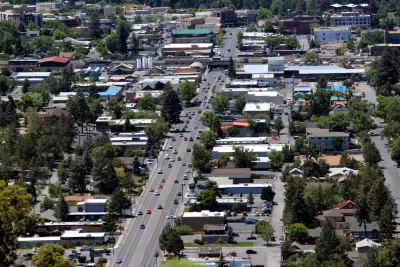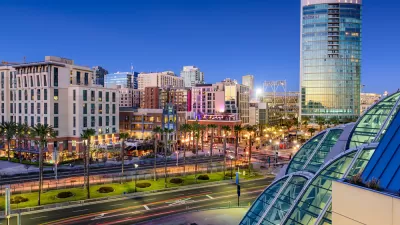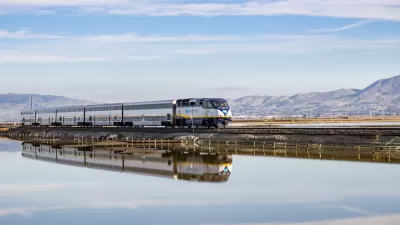Financial projections from the state's Department of Transportation suggest the agency does not anticipate a marked reduction in driving in the next decade.

Despite a mandate to reduce carbon emissions by 45 percent across state agencies, the Oregon Department of Transportation's financial projections show little progress, reports Rachel Monahan. Based on gas tax revenue projections, "ODOT has made commitments to the financial markets where it sells bonds to finance road projects that make clear the agency is actually counting on emissions to continue. The revenue forecast doesn’t say emissions, but it readily translates to exhaust coming out of tailpipes."
According to ODOT projections, cars and trucks will emit 19.3 million metric tons of CO2 annually. But to meet the 45 percent goal, the state would need to reduce emissions by 12 million metric tons each year. An ODOT spokesperson acknowledged the pattern, saying "ODOT revenue forecasts are based purely on consumer patterns and historical data" rather than future goals. The projections also do not account for potential reductions in vehicle miles traveled thanks to congestion pricing schemes and other initiatives aimed at reducing driving.
FULL STORY: ODOT Projects Gas Guzzling Won’t Decline, Even as It Pays Lip Service to Meeting Climate Goals

Alabama: Trump Terminates Settlements for Black Communities Harmed By Raw Sewage
Trump deemed the landmark civil rights agreement “illegal DEI and environmental justice policy.”

Planetizen Federal Action Tracker
A weekly monitor of how Trump’s orders and actions are impacting planners and planning in America.

Why Should We Subsidize Public Transportation?
Many public transit agencies face financial stress due to rising costs, declining fare revenue, and declining subsidies. Transit advocates must provide a strong business case for increasing public transit funding.

Understanding Road Diets
An explainer from Momentum highlights the advantages of reducing vehicle lanes in favor of more bike, transit, and pedestrian infrastructure.

New California Law Regulates Warehouse Pollution
A new law tightens building and emissions regulations for large distribution warehouses to mitigate air pollution and traffic in surrounding communities.

Phoenix Announces Opening Date for Light Rail Extension
The South Central extension will connect South Phoenix to downtown and other major hubs starting on June 7.
Urban Design for Planners 1: Software Tools
This six-course series explores essential urban design concepts using open source software and equips planners with the tools they need to participate fully in the urban design process.
Planning for Universal Design
Learn the tools for implementing Universal Design in planning regulations.
Caltrans
Smith Gee Studio
Institute for Housing and Urban Development Studies (IHS)
City of Grandview
Harvard GSD Executive Education
Toledo-Lucas County Plan Commissions
Salt Lake City
NYU Wagner Graduate School of Public Service





























